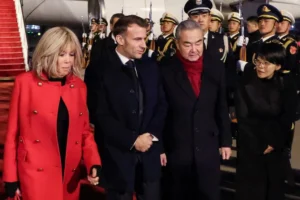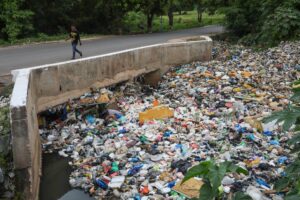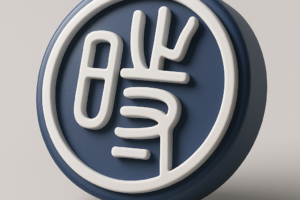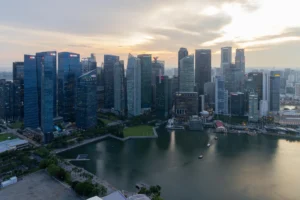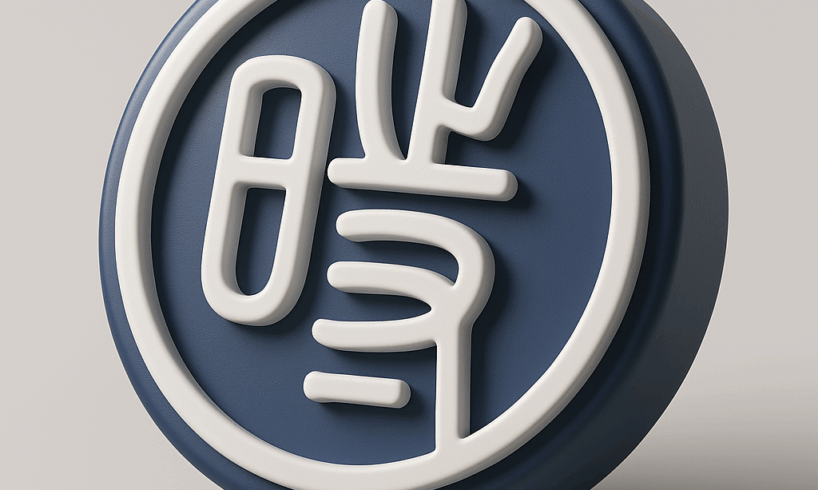
On June 30, the performance artist and environmental activist known as Nut Brother (坚果兄弟), along with his collaborator and art curator Zheng Hongbin, disappeared after returning from a trip investigating industrial pollution in Xiaohaotu County, Shaanxi Province. It was later revealed that the pair were placed in a 20-day administrative detention by the Yulin Public Security Bureau for “picking quarrels and provoking trouble.” A successful legal intervention secured their early release late last week. The incident was a reminder of the repression faced by Chinese artists who use public spectacles to blend art and activism.
News of their disappearance appeared to be censored online. One WeChat post, later deleted, announced that Nut Brother and Zheng Hongbin had gone incommunicado and asked for netizen support in locating them. The post also included an overview of Nut Brother’s previous works of performance art. Another WeChat post, also later deleted, described Nut Brother’s previous experiences in detention and his commitment to the residents of Xiaohaotu County, and it enumerated the various ways in which authorities failed to follow up on promises to rectify pollution incidents that Nut Brother helped expose. Their release was met with relief by many Chinese netizens who worried for their safety and praised their resolve to speak out against injustice.
Nut Brother and Zheng Hongbin visited Xiaohaotu multiple times since 2018 in order to investigate the impacts of coal mining and gas drilling on water sources. The resulting pollution led to significant diseases among local residents and livestock. That year, the artists displayed 9,000 water bottles with polluted water from Xiaohaotu in a Beijing exhibition to raise public awareness. They returned to Xiaohaotu earlier this year to investigate further negative health impacts on residents, which they documented in 12 reports on social media. All of the reports were deleted after the artists’ disappearance this month.
In 2022, after a creating a short-lived project of installing a public phone booth for pollution victims to share their sufferings with strangers, Nut Brother described the narrowing space for protest and increased level of police harassment: “The changes in the past decade mean we need to have projects that are more creative if we are determined [to] solve the environmental problems.” Oiwan Lam at Global Voices described how Nut Brother’s latest disappearance demonstrates both the unique importance and plight of performance artists in China:
In China, as the space for citizen organizations and investigative journalism has shrunk, performance artists have, to a certain extent, taken on the media’s role in raising public awareness of social issues, particularly those aligned with Xi Jinping’s socialist core values, such as his pledge to protect the country’s environment. To avoid accusations of spreading rumours, the artist-activists’ performances must be backed by rigorous research.
“Nut Brother” is one of the most successful artist-activists in negotiating with the authoritarian political system. For example, in Xiaohaotu’s pollution research, they worked with villagers, reporters, and volunteers to collect testimonies from approximately 50 villages, directing their criticism at corporations rather than local government authorities. Moreover, they organized their water bottle exhibition and heavy metal music performances in a guerrilla manner across different regions to circumvent arrest and detention from local authorities.
Overseas Chinese activist from the White Paper protest, Rei Xia, took to X to explain the unique role of performance artists in China:
“I have been following the practice of artists such as the ‘Nut Brother’ and Zheng Hongbin. Their creative paths are deeply rooted in grassroots organizing. Their works are primarily social interventionist art that connects with specific individuals and addresses specific issues. In China, there has never been much space for publicized artistic expression, which is why such modest but solid practitioners are rare and precious. They are the ones who blur the line between artist and activist.” [Source]
(Global Voices, like CDT, is currently seeking donations to help support its translation work.)
Other well-known Chinese performance artists have faced similar hurdles. Sia X. Yang recently wrote in the Made in China Journal about the career trajectory of artist Ge Yulu (葛宇路), who rose to prominence through provocative public stunts of socially engaged art, only to run into various forms of official punishment, censorship, and the financial stress that pressured him into compromising somewhat in his ambition:
Thanks to being radically tamed, Ge now views some intentionally confrontational artworks as fragile; once the targets or contexts they challenge disappear, their meaning can wither away. As a result, he rhetorically declares a preference for being ‘resistant’, with dark humour, and takes the necessity of being ‘compromised’ for granted. Once an emerging avant-garde figure who gained sudden attention from and brought excitement to the art world, Ge’s turn towards ‘mild resistance’ has led some radical peers to view him as ‘slippery’, ‘idolised’, and ‘prematurely established’ (Anonymous 2021).
Beginning in 2018, Ge shifted from unpredictable, provocative interventions to more thoughtful, pleasing, and entertaining engagements within art institutions. In many cases, institutions welcomed these standardised performances—commissioning and permitting them to showcase their openness, generosity, and self-critical stance. In this context, Ge was afforded the privilege of being a ‘silly artist’ or prankster—someone who could prod institutional boundaries, disturb surface-level harmony, and make a slightly different sound without truly threatening the system.
[…] The significance of Ge’s institutional critique has often been measured against his earlier socially engaged practices. When his gallery, Beijing Commune, presented his second solo show, This One is a Painting, So is That One (一幅是画, 另一幅也是画), in 2021, Ge abandoned his signature performance art in favour of exhibiting about 30 of his miniature paintings, each priced between RMB20,000 and RMB30,000 (US$3,100–4,700). He described the act as an ‘artistic suicide’ (艺术自杀) because, as he openly admitted, he had created the works for money (Liu 2021).
[…] Rendered in a standard realist style, Ge’s paintings showcased the foundational techniques required of high school students and adult candidates preparing for entrance exams to art schools in China. The irony embedded in the exhibition was pointed: many of China’s most celebrated—and expensive—painters shared this same mechanical, repetitive training, rooted in awkward imitation. Through these works, Ge sought to evoke the collective trauma of Chinese art education. Yet, the controversy surrounding his so-called ‘artistic suicide’ stemmed from his choice of medium and form. As Ge himself acknowledged, ‘Paintings are undoubtedly much easier to sell than conceptual performances and videos’ (Liu 2021). By being so transparent about his financial motivations, Ge was labelled ‘sophisticated’, ‘pragmatic’, ‘money-driven’, and even ‘boring’ (Anonymous 2021). His critics began to question the sustainability of his talent. For Ge, however, this shift marked a return—not to Ge Yu Lu the artwork, but to the real Ge Yulu. [Source]
In a 2024 interview with CDT, the University of Oxford’s Margaret Hillenbrand discussed delegated performance art in China, and the risk that performance art which attempts to critique social injustice through class-like solidarity can instead reproduce power imbalances by instrumentalizing its participants. (This might apply to certain projects by Ge Yulu, such as his 2018 performance titled Cool, but perhaps less so to Nut Brother.) Nonetheless, Hillenbrand ended on a positive note by emphasizing the transformative potential of performance art in China, whereby physical provocations create moments of friction that transgress normative boundaries and catalyze new possibilities for relating with other people.

